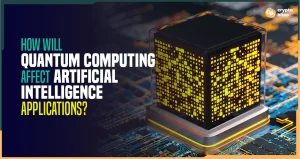
What is Crypto Mining? – Everything About How it Works
Have you heard of gold mining? Well, cryptocurrency mining is somewhat like that.
When it comes to cryptocurrencies like Bitcoin, mining is the process they use to handle transactions and create new tokens.
Think of crypto mining as a digital way of mining for gold.
The main goal of mining is to confirm cryptocurrency transactions and provide proof of work. This proof is then added to a block on the blockchain, which is like a digital ledger for mining activities.
At one point, cryptocurrency mining created a frenzy, causing a surge in demand for graphics processing units (GPUs).
At first glance, cryptocurrency mining may seem too good to be true.
Essentially, by using your computer to validate transactions on a blockchain, you can earn crypto rewards.
It’s a fairly easy process; once set up, it becomes a passive income stream for you.
Although the initial demand for GPUs was high, the cryptocurrency mining craze slowed down as the difficulty of mining top digital currencies like Bitcoin increased rapidly.
Despite this, mining cryptocurrencies can still be profitable.
So, what exactly is crypto mining, and how can you get started? Let’s explore these questions in detail in this article.
What is Crypto Mining?
Many see crypto mining as just a way to make new coins, but it’s more than that.
Crypto mining is how Bitcoin and other digital currencies create coins and confirm transactions.
The key role of mining is to prevent the double-spending of digital money on a widespread network.
Crypto mining, also known as cryptocurrency mining, checks if a transaction between two wallets is real.
The word “mining” is used as a metaphor because creating bitcoin is similar to mining for gold, but instead of physical effort, it involves computational work.
For every computational effort in validating the blockchain network, miners receive a “block reward.”
Crypto mining employs specialized computers to add blocks to a proof-of-work (PoW) blockchain.
Adding a block validates the latest transactions and generates new digital tokens.
Under the proof-of-work model, miners use computers to solve complex math problems, proving they’ve done the work.
The first miner to solve it gets to confirm a block of transactions added to the cryptocurrency’s blockchain.
They also receive a block reward—a predetermined amount of the cryptocurrency they’re mining.
This reward includes new coins and transaction fees.
Mining needs a lot of computing power, measured in hashes per second, to work well.
Miners use specialized hardware like ASICs and GPUs for this process.
Anyone with enough computing power and an internet connection can choose to mine cryptocurrency.
With crypto mining, security comes from how it’s spread out across many computers, making it tough to cheat.
When someone spends cryptocurrency, the ledger has to be updated by taking money from one account and giving it to another.
But since digital stuff can be changed easily, only verified miners can update this ledger.
This stops someone from spending the same money twice.
Since there’s no central control, mining is super important for making sure transactions are legit.
Miners are motivated to secure the network by participating in transaction validation.
How Does Crypto Mining Work?
There are three main ways to get bitcoin and other cryptocurrencies.
You can buy them on places like Coinbase, get them in exchange for services and goods, or you can “mine” them.
Mining, which is the third way, involves a few steps.
Miners have to check transactions and do math called proof of work (PoW). There are also newer ways, like proof of stake (PoS) and proof of authority (PoA), used in modified blockchains like Ethereum’s.
When miners work on making a new block in the blockchain, they try to guess the right hash.
They use their GPUs to create a 32-bit number that’s only used once, called a nonce.
The hash they’re aiming for is 256 bits, much bigger than the nonce.
The miner who gets a nonce for creating a hash lower or equal to the target hash gets tokens for finishing the block.
After agreement among the nodes, these new transactions get added to the blockchain.
Each block, around 1 megabyte in size, holds the previous block’s hash, transaction data, and a timestamp.
Now, let’s have a step-by-step look at the crypto mining process and how it works.
1. Transactions are Verified Using Nodes
Users in the cryptocurrency network create secure transactions and share them with others.
When a transaction begins, the information is added to a block and copied to various nodes on the network.
These nodes act as administrators for the blockchain, ensuring everything runs smoothly.
Their role involves spotting any bad actors while reaching agreement on the validity of transactions.
The block hash relies on the block’s data, so altering even a single character in a transaction would mess up the reference.
This setup quickly reveals if there’s any tampering with the data.
To motivate this verification process, users receive rewards, typically in the form of cryptocurrency.
2. Transactions Are Added to a List to Form a Block
Nodes keep records of transactions before combining them into a block.
Every node holds a complete copy of the blockchain.
Each block needs at least one transaction, but usually it contains several transactions that form the entire block.
After verifying the transactions, they’re grouped for encryption, and then the block becomes part of the blockchain.
If any transaction seems fishy, miners will detect it and discard it.
For Bitcoin, a payment typically takes about 10 minutes to confirm on average.
The network can handle a maximum of 7 transactions per second.
3. Hash is Added to the Unconfirmed Block
When a block is formed, its header holds crucial information to crack the hash.
This header includes a version number, a timestamp, the previous block’s hash, the Merkle root’s hash, the nonce, and the target hash.
Using this block header, cryptography checks transaction data before the block joins the chain.
The nonce adds to the hashed content of the preceding block and then gets hashed itself.
4. Miners Verify the Block’s Hash
Before a block becomes part of the blockchain, the network needs to confirm the information in the block using a hash.
To confirm a block, miners gather transaction data and give it a hash.
When verifying the next block, miners collect a new set of transactions and generate a new hash.
Every block’s hash has the last block’s hash and a new one from its transactions.
This hash is vital for the blockchain’s security.
If someone tries to alter block data, it will change the hash, which helps prevent tampering.
5. The Block is Published After Confirmation
Before a block is officially added, it needs confirmation from one or more miners in a mining pool.
Miners’ main task is confirming and validating transactions.
Once confirmed, they add the block to the chain, where it stays as more blocks join.
These blocks are tough to change once they’re in place, making them tamper-proof.
Security-wise, it’s a solid method because altering one block would mean changing the whole chain.
Even with today’s technology, that’s nearly impossible due to the time and computing power needed.
Technical Components of Crypto Mining
Cryptocurrency mining relies on powerful computers and ample electricity. As the blockchain grows, the computing power needed has evolved.
Now, let’s break down some key terms to understand the technical side of crypto mining:
- Rig: This is a specialized setup, often using graphics cards, designed for mining. It includes USB ports, wires, and a motherboard, functioning as a self-contained unit.
- Node: These components validate trades and add new blocks to the blockchain. Nodes solve complex math problems, creating new blocks and earning cryptocurrency.
- Hash Rate: It measures the network’s computational power, usually in millions or trillions of hashes per second (MH/s or TH/s).
- Mining Pool: Miners combine resources to evenly share rewards based on the work they contribute and the likelihood of finding a block.
- Energy Usage Efficiency: This measures the hashes per kilowatt-hour, helping miners assess compensation against electricity costs.
- Gas Fee: It’s a transaction fee paid for actions on the blockchain network, regardless of the transaction’s success. Users pay this fee to miners and processors when using crypto.
Different Types of Crypto Mining
Crypto mining comes in different types, depending on the method and how many people are involved. Let’s discuss some of the common types of crypto mining.
1. CPU Mining
Because CPU mining doesn’t require specialized equipment and is accessible to everyone, this type of mining is popular.
In CPU mining, you use your computer’s central processing unit (CPU) to earn cryptocurrencies.
The CPU’s arithmetic logic units (ALUs) handle complex calculations, allowing your PC to validate transactions and solve intricate algorithms.
Essentially, if you have a regular desktop PC, you can use its computational power for CPU mining.
This method usually relies on proof of work (PoW) to show task completion and earn compensation by adding new currencies.
2. GPU Mining
GPUs, or multiple GPUs, are used to solve complex equations and verify transactions more efficiently.
GPUs have faster hash rates due to their arithmetic logic units, making them better for mining than CPUs.
They can handle intricate math quicker, allowing for faster solutions.
GPU mining relies on the processing power of these cards to validate transactions or create new currencies.
It’s efficient at solving tough cryptographic equations at a faster pace compared to CPUs.
In this type of mining, various algorithms change data into smaller, fixed-size hashes, making it more manageable for larger volumes of data.
3. ASIC Mining
This kind of crypto mining uses special tools and codes to do a specific job.
These devices, with powerful processors, easily outperform GPU and CPU mining.
An Application-Specific Integrated Circuit (ASIC) is a computerized tool made for one job – in this case, mining digital currency.
Each ASIC miner is built for a specific digital currency; for instance, a Bitcoin ASIC miner focuses solely on Bitcoin.
Unlike general-purpose integrated circuits like RAM or CPUs, ASICs are specialized for cryptocurrency mining.
In mining, the goal is to modify a few numbers in a hash to find one smaller than the target hash.
The more computations done in a given time, the better the chance a miner has to earn cryptocurrency.
ASIC mining devices are designed to rapidly compute these hash functions.
4. FPGA Mining
Field-Programmable Gate Arrays (FPGA) are circuits that can be set up to do specific logical tasks.
FPGA mining devices can be set up to mine a particular cryptocurrency.
The benefit is that these FPGAs can be reconfigured, if needed, to mine a different cryptocurrency using a different mining algorithm, though it requires specialized setup.
They are up to five times more energy-efficient than GPUs and may help you recover your setup costs for cryptocurrency mining in a couple of years.
5. Cloud Mining
Just like you can buy cloud storage for your data needs, you can get a cloud mining package from a provider.
This allows you to mine cryptocurrencies without dealing with upfront costs and the maintenance of specialized mining hardware.
Cloud mining contracts vary in duration (from weeks to years) and hash rate.
These services are often competitively priced because the cloud mining provider has efficient ASIC miners in multiple warehouses.
You can also virtually rent ASIC miners, although it’s not as popular now. This offers flexibility but comes with extra setup and maintenance costs.
6. Solo Mining
The previous five types of crypto mining were based on how the mining was done.
Now, let’s explore two types based on how many people are involved.
The first is solo mining.
In solo mining, also known as individual mining, miners work on cryptocurrency alone.
They do the mining process independently without relying on others.
Individual miners using their own devices can get substantial rewards for finding a lot of cryptocurrency within their own mining software.
Two things matter a lot in solo mining: how good your hardware is and how complex the network is.
The key thing about solo mining is that finding solutions to complex block data can be quick or take a long time.
Solo miners need patience because it can take a while.
But in the long run, it might offer much higher returns than mining in a pool.
Remember, changes in cryptocurrency prices and the cost of power will affect how profitable solo mining is.
7. Pool Mining
Pooled mining is when miners combine resources to create blocks more often than when mining alone.
Here, the reward for finding a block is shared among the team.
Miners came up with this method to increase the chances of finding blocks by working together.
These groups are called mining pools, and their approach is known as pool mining.
Mining pools combine the power of many miners to match big mining operations.
Miners in pools get rewards based on their contribution and only after proving their work for transactions.
The key to successful pool mining is providing more power in each mining attempt.
Solo miners work alone but might use multiple mining devices.
In solo mining, miners independently try to confirm blocks, while in pool mining, they team up to ensure a steady income.
How Much Can a Crypto Miner Earn?
A miner’s earnings depend on the cryptocurrency they mine and the proof method they use.
In Bitcoin, the number of coins awarded decreases during periodic events called “halvening,” where the coin’s subsidy is cut in half.
After each halvening, the reward for creating a block is halved.
Every 10 minutes, a Bitcoin miner gets new coins, but over time, they earn fewer bitcoins per block.
Bitcoin halves the block reward every 4 years, decreasing from 50 bitcoins at its 2009 launch to 6.25 BTC now.
As all bitcoins are mined, the block reward will vanish, but miners will still earn transaction fees per block.
Miners currently receive half of what they did before the last halvening.
The halvening influences Bitcoin’s value, as the increased difficulty in adding coins reduces supply vs. demand.
Over time, holding coins is expected to increase in value, affecting mining profitability.
Despite cost inefficiencies, many miners find value in mining for potential long-term gains.
The Takeaway
Crypto mining involves two main tasks: introducing new cryptocurrency into the system and validating and recording transactions.
It’s a vital part of the crypto ecosystem because mining is how digital money is created on the blockchain, a public ledger.
The essence of mining is weighing the cost against the reward of earning cryptocurrency.
But mining isn’t just about crypto; it’s becoming a significant part of future technologies like the metaverse and Web 3.0.
Whether you’re an individual aiming to succeed in mining or a large-scale mining operation backed by corporations or governments, mining’s impact on the future is undeniable.




